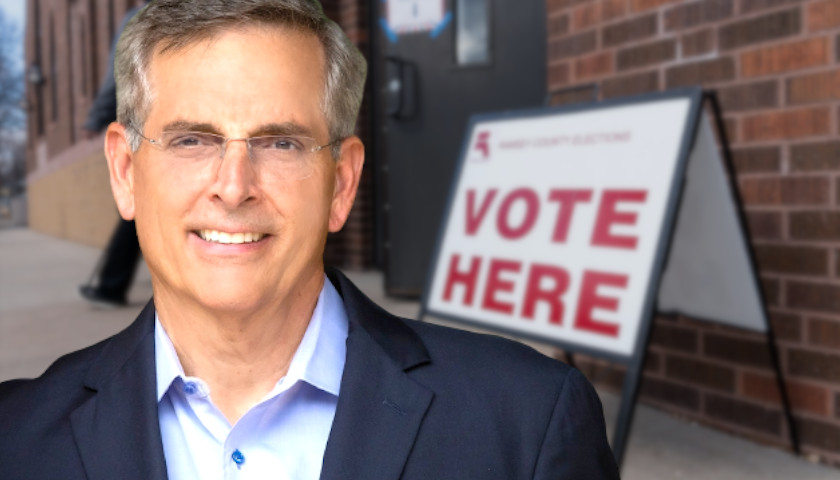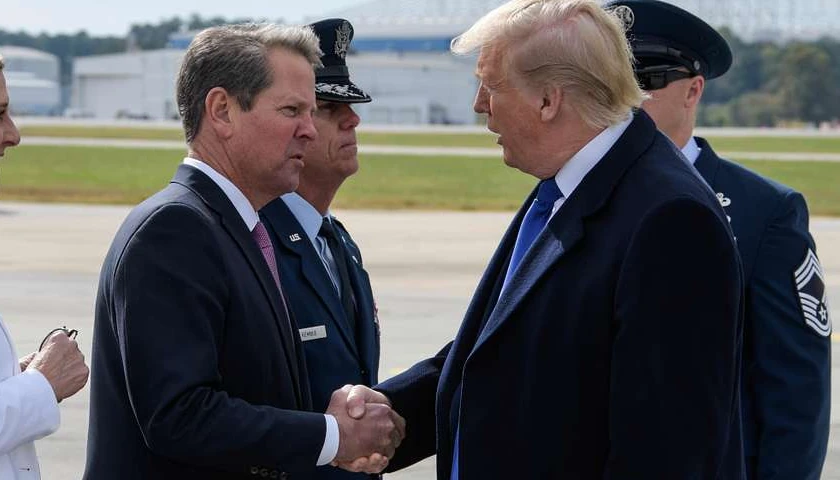Georgia Secretary of State Brad Raffensperger (R) is planning to present several electoral system proposals, including ranked-choice voting, to state lawmakers following the runoff between Senator Raphael Warnock (D-GA) and Herschel Walker (R), which handed a win to Warnock.
In an interview with The New York Times following the runoff election, Raffensperger said he would offer three proposals to Georgia lawmakers, including one to establish a “ranked choice instant runoff” system, whose main goal would be to eliminate having voters return to the polls after the general election and the costs associated with doing so.
Raffensperger also said he would propose opening more early-voting locations and lowering the vote percentage threshold required of candidates to avoid a runoff election from 50 to 45 percent.
“The elected legislators need to have information so they can look at all the different options that they have and really see what they’re comfortable with,” Raffensperger said.
The Georgia Secretary of State is still in the middle of controversy over his decision to certify the 2020 presidential election for Joe Biden just three days after Election Day, as Gateway Pundit’s Joe Hoft observed.
In August 2019, Hans von Spakovsky and J. Adams wrote at the Heritage Foundation that ranked-choice voting is nothing less than “a scheme to disconnect elections from issues and allow candidates with marginal support from voters to win elections.”
“In the end, it is all about political power, not about what is best for the American people and for preserving our great republic,” the authors stated, noting the process serves to “obscure true debates and issue-driven dialogs among candidates and eliminates genuine binary choices between two top-tier candidates.”
“So-called reformers want to change process rules so they can manipulate election outcomes to obtain power,” the Heritage writers asserted about those who promote ranked choice voting.
In the ranked-choice voting system, voters order their candidate choices according to preference.
If none of the candidates are elected the number one pick by a majority of voters, the candidate with the lowest number of votes would be eliminated from the ballot. Voters who selected that candidate as their top choice would automatically have their votes changed to their second pick, and the scores would then be recalculated. This process continues until one of the candidates finally wins a majority as the second, third, or, perhaps, fourth choice of voters.
“In the end, a voter’s ballot might wind up being cast for the candidate he ranked far below his first choice—a candidate to whom he may have strong political objections and for whom he would not vote in a traditional voting system,” explained von Spakovsky and Adams.
For those concerned about voter “disenfranchisement,” ranked choice voting – also called “instant runoff voting” – would be a major instigator since “ballots that do not include the two ultimate finalists are cast aside to manufacture a faux majority for the winner.”
The Heritage authors wrote that even former California Governor Jerry Brown Jr. (D) vetoed a bill to expand ranked-choice voting in his state in 2016, stating it was “overly complicated and confusing” and “deprives voters of genuinely informed choice.”
“Such a system would present many opportunities to rig the electoral system,” von Spakovsky and Adams explained, noting the problem of “ballot exhaustion,” which occurs when voters only rank one or two of the candidates and these are eliminated in the first couple rounds of tallies. Consequently, these voters’ choices will not be considered at all in the remaining rounds.
“This ballot exhaustion leads to candidates being elected who were not the first choice of a majority of voters, but only a majority of ‘all valid votes in the final round of tallying,’” the writers observed, quoting a study by Craig Burnett and Vladimir Kogan. “Thus, ‘it is possible that the winning candidate will fall short of an actual majority,’ eliminating the ‘influence [of many voters] over the final outcome.’”
– – –
Susan Berry, PhD, is national education editor at The Star News Network. Email tips to [email protected].
Photo “Brad Raffensperger” by Brad Raffensperger. Background Photo “Voting Station” by Lorie Shaull. CC BY 2.0.





